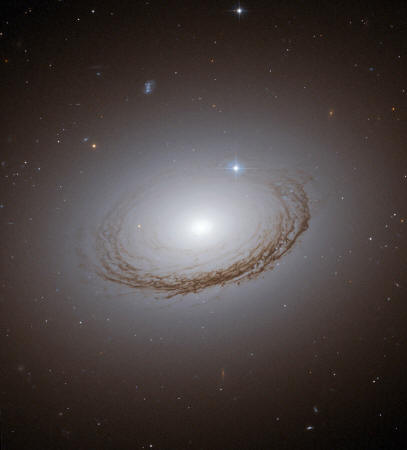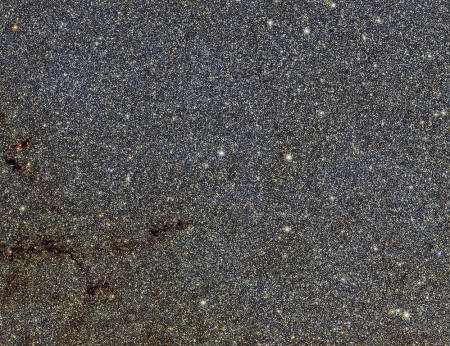|

by Nola Taylor Redd
November 06, 2015
from
Space Website
Spanish version

The NASA/ESA
Hubble Space Telescope
captured this
striking image of the galaxy NGC 7049,
with its dust lanes
backlit by the stars in its central halo.
Credit: NASA/ESA/W. Harris
A previously unidentified highway of dust extends across the Milky
Way, between the sun and the central bulge of the galaxy, scientists
have found.
Called the "Great Dark Lane" by the astronomers who announced it,
the dusty road twists in front of the bulge of the galaxy.
"For the first time, we could map
this dust lane at large scales, because our new infrared maps
cover the whole central region of the Milky Way," Dante Minniti,
a researcher at Universidad Andres Bello in Chile and lead
author of a study describing the findings, told Space.com by
email.
Mapping the
Milky Way
The center of
a spiral galaxy contains a
collection of stars that bulge above and below the flatter spirals,
much like an egg yolk. The arms that give the galaxies their
classification twist around the bulge, often in a beautiful spiral
(although sometimes they are more elongated).
Lanes of dust often lie between these
arms, which present a particular challenge to map out.
"It is very difficult to map the
structure of our galaxy because we are inside, and it is very
large and covered with dust clouds that are opaque in the
optical," Minniti said.

Images like this one
from the VVV survey
helped lead author
Dante Minniti
identify the Milky
Way's great dark lane.
Credit: ESO/VVV Survey/D. Minniti, I. Toledo
Working with a team of astronomers, Dante Minniti used the
European Space Observatory's
Vista Variables in the Via Lactea Survey
(VVV), a project to scan the Milky Way using the
VISTA telescope in Chile, to study
the galaxy in the near-infrared.
At this wavelength, telescopes are able
to peer through the clouds of dust to a group of objects known as
red clump (RC) stars lying within the bulge.
Red clump stars have helium-burning cores that generate a similar
brightness no matter what their age or composition is. This makes
them
reliable distance indicators for
astronomers.
Based on the measurement of 157 million stars, Minniti and his team
found that the RC stars of the Milky Way's bulge were split into two
colors - a difference they determined was caused by dust between the
stars and the observers.
The astronomers could see a sharp
transition between the two distinct groups - the dusty Great Dark
Lane dividing them.
The Great Dark Lane extends approximately 20 degrees across the sky,
reaching both above and below the plane of the galaxy. It sits
roughly 15,000 light-years from the solar system, although the team
is still working to refine the distance. It lies outside of the
bulge rather than being contained within it, they said.
If the dust passed through the bulge itself, the red clump stars of
the center would have a patchier distribution, rather than a clean
break, as some of the stars at a certain height above the plane
would be in front of the dust and others would be behind it, the
researchers said.
Instead, all of the red clump stars
contained within the bulge lie behind the dust, according to the
study.
"Detailed maps and modeling are
needed in order to test this important galactic feature," the
researchers wrote in their paper (Milky
Way Demographics with the VVV Survey), which appeared
in the journal Astronomy & Astrophysics last year.
|



